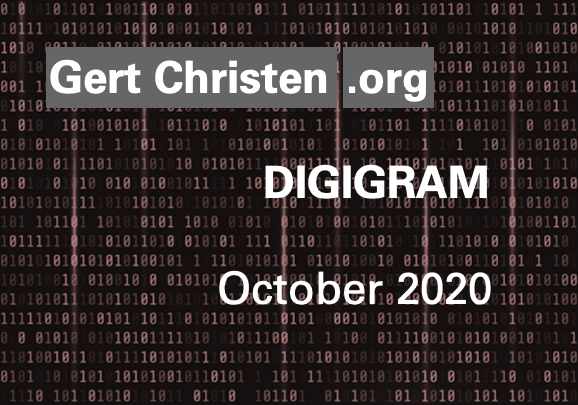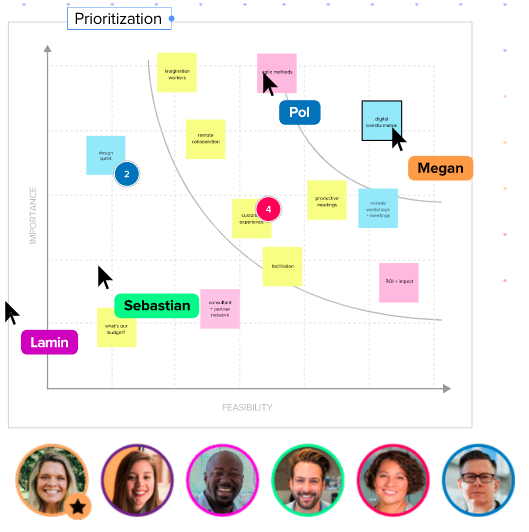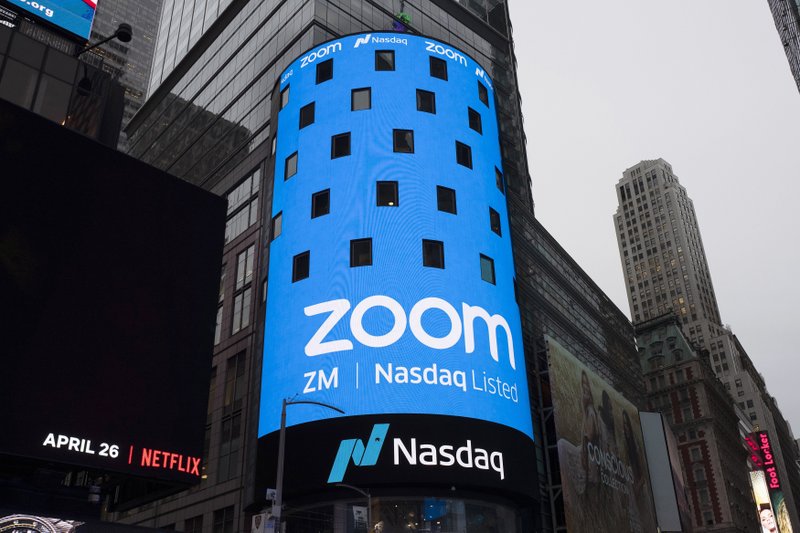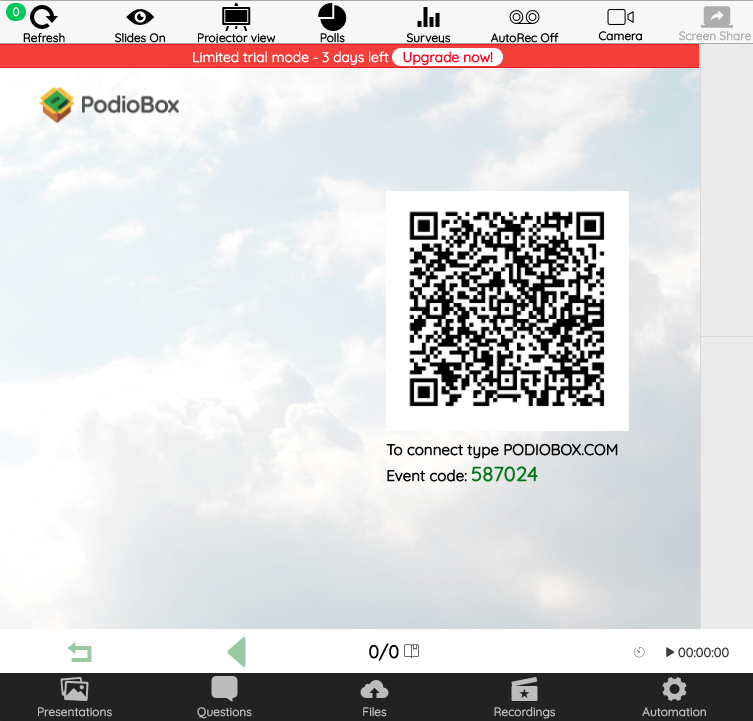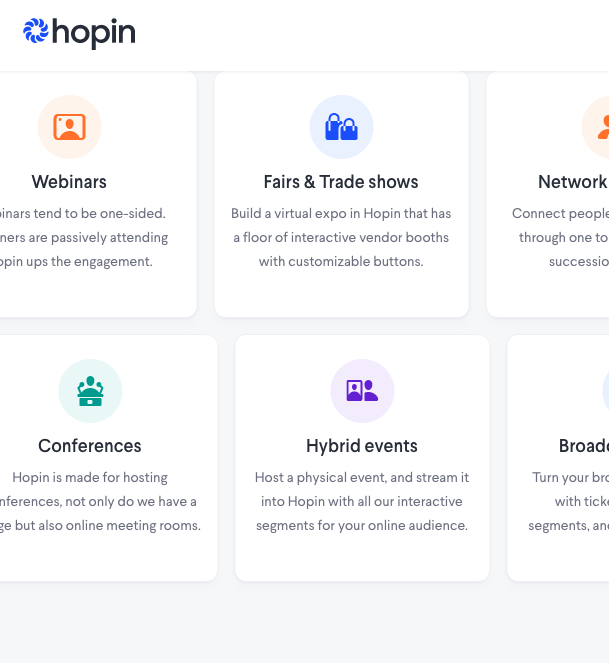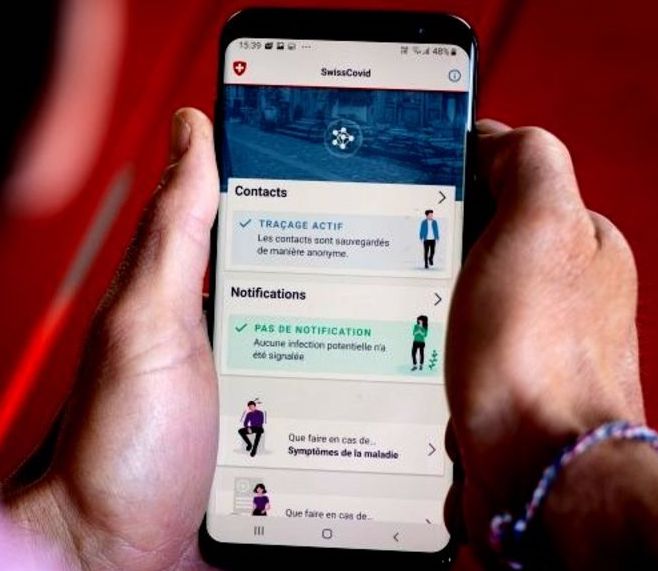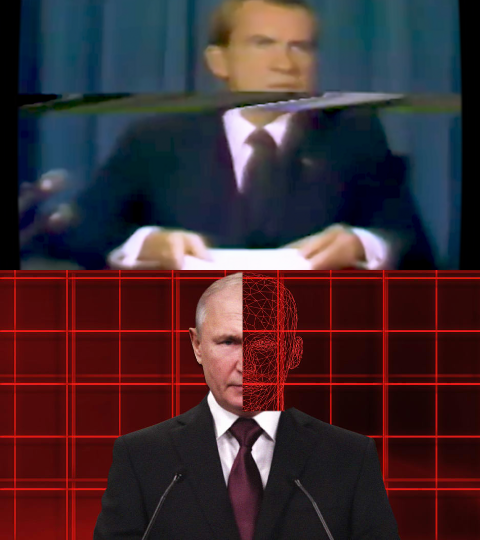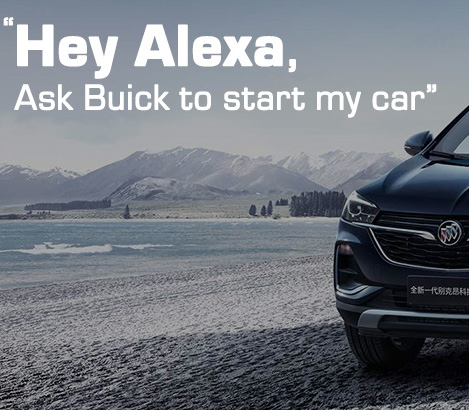“Welcome to the fall newsletter of 2020. Here in San Francisco, we’re still firmly in the grip of COVID, and it’s good to see how disciplined people are…”. UNBELIEVABLE! I wrote exactly the same sentence in the summer newsletter, and it’s totally representative of the situation here in SF. Not much has changed; only small improvements, including getting legal haircuts and the city discovering outdoor dining (and loving it!!). Please continue to be safe, everyone – wear masks outside, avoid crowds, and wash your hands.
Some of you asked me earlier this year to discuss – and strategize about – COVID. I didn’t, because, frankly, I didn’t think it would last this long and be this disruptive. But, here we are, 10 months since the outbreak, still without an end in sight. I’ve started seeing COVID influences on technology and how it’s being used. A sure sign that this plague is dramatic, disruptive, and consequential. And, therefore, it’s relevant when thinking about strategy.
So for this unfortunate reason: Welcome to the COVID-Tech DIGIGRAM newsletter!
I see COVID influences in three areas:
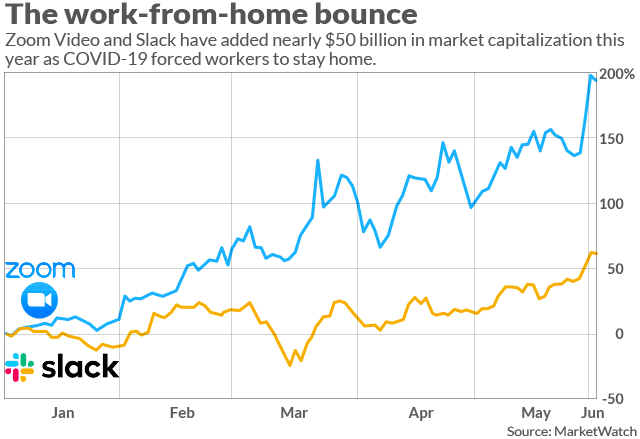
(Image credit: Market Watch, June 2, 2020)
#1 Contactless will stay as “less contact needed”: Interactions between people have changed because they wanted to keep their distance or because they couldn’t get together at all. The biggest losers are those who still haven’t brought their processes online, and continue to need physical interactions.
#2 Remote collaboration works and will change how we work: At first, people couldn’t get together to work together. But today, after months of forced remote collaboration, many are finding that it works. We don’t always have to physically be together to collaborate. Once we accept this fact, we can start to see a significant potential for work post-COVID: Less travel, more flexible locations, new styles of collaboration, all supported by smart technology. For instance, new user interfaces, such as virtual reality (VR), and new methods, such as 3D simulations, could see their commercial breakthroughs.
#3 Health can be tracked, and we will be traced: People became acutely aware of their own day-to-day health during COVID and the health of those around them. Two groups took shape:
1) People whose health we wanted to track because we get into close proximity with them, such as family and co-workers.
2) People whose health should be traced because they might pass COVID to us without knowing.
Happy reading, and I truly hope the next DIGIGRAM will catch us all at better times (This is again exactly the same sentence as in the last newsletter, and the one before, a lamentable fact)!
Till soon, Gert
P.S: If you like this newsletter you can subscribe here. If you’d like to reach me, you can do so at gert.christen@artecos.ch or +1 650 441 6299.
Less contact and contactless:
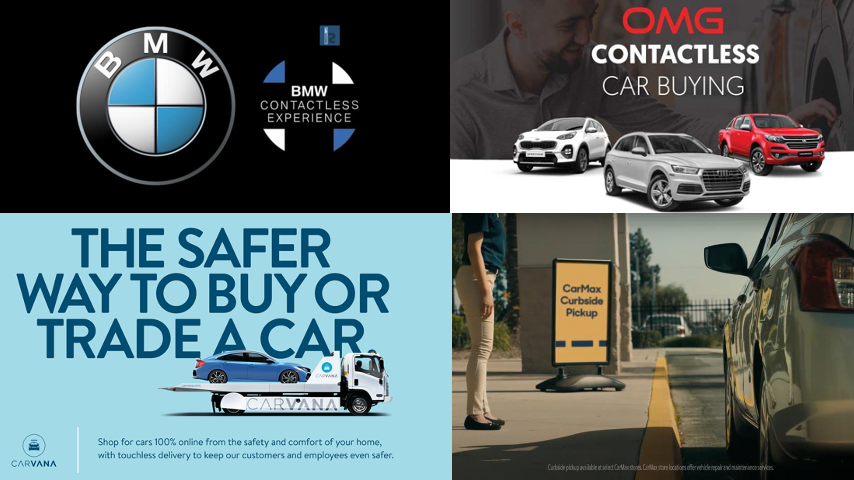
(Image credit: BMW, Audi, Carvana, CarMax)
It’s kind of sad for me to write this, but it’s true: We’re getting used to less contact. This has changed user experiences, and we’ve learned that some of them actually work better than expected.
The car industry, for example, has been flooding my TV with ads for contactless test driving, buying, or servicing experiences. You can watch some of their commercials here. Thank you, COVID, for showing this industry the way into the online and contactless age! Let’s hope that the incumbents learn their lesson and will finally do what Tesla, the “born digital” car brand, has done from the start: Move the car comparing and buying experience entirely online. Car showrooms are only there to display cars (and therefore may be located inside of malls). And the car delivery experience can be streamlined.
COVID has painfully demonstrated that the old way of testing, buying, and taking delivery of a car is outdated, unwanted, and even laden with unnecessary cost. I never again want to sit in a car salesman’s office to wait for the counteroffer from the always invisible “finance manager”. I’ll scream and walk out; it’s just too ridiculous to bear one more time. If even car dealers can reduce contact and transform the experience to almost contactless, most other businesses can, too.
Another good example is Lunchclub, which started with facilitating real meetings. When COVID hit, they pivoted to online sessions. As a result, they may have grown faster than without COVID.
Moreover, I’m convinced that the growing need for and acceptance of less contact will help new interfaces to break through.
Augmented reality (AR) and VR can help to transform user experiences into less contact ones. This AR-enhanced fashion show is an example of what’s possible and how it can even enrich the user experience.
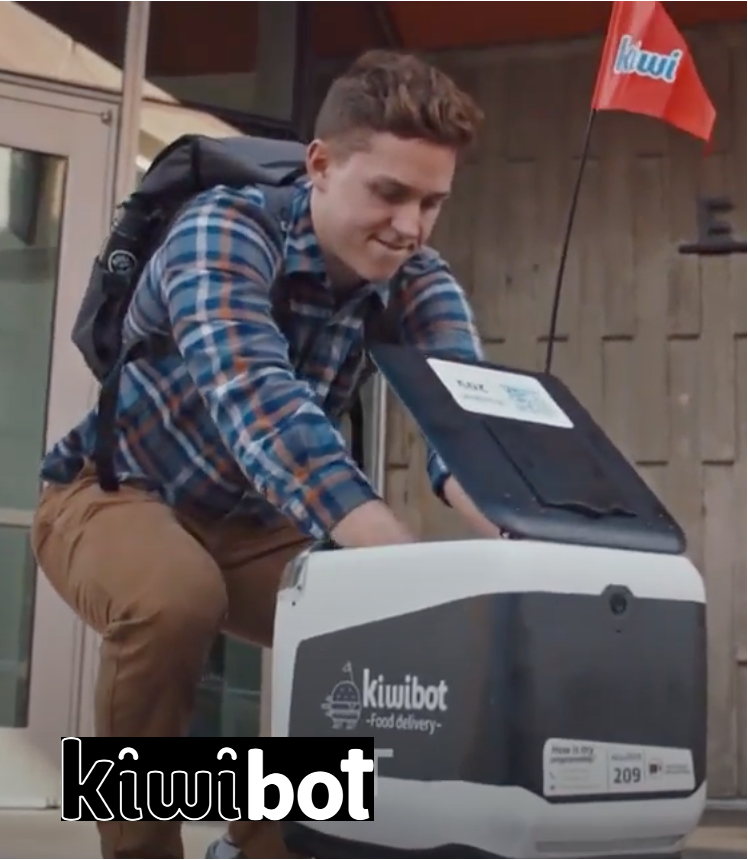
(Image credit: Kiwibot www.kiwibot.com and my UC Berkeley students Yuna Tae and Zaiyao Zhang)
Self-driving vehicles can be used for entirely contact-less deliveries. Some examples: Small delivery robots like the ones by www.kiwibot.com are now roaming university campuses, including UC Berkeley, where I see them now and then. And larger autonomous delivery cars, like those from www.nuro.ai, have been transporting food, water, and medical supplies during COVID.
COVID made many accept that remote work is possible. Could COVID also accelerate the acceptance of self-driving vehicles?
How it could work was the topic of a challenge by Samsung in my recent “Deplastifying the Planet” course at UC Berkeley. Watch this fantastic movie introducing “Pickie,” the self-driving delivery robot that also collects plastic trash on the return trip. Our students Yuna Tae and Zaiyao Zhang created the film as part of their course project. Thank you both, and thank you Samsung Strategy & Innovation Center and Kiwibot for your support!
More collaboration works:
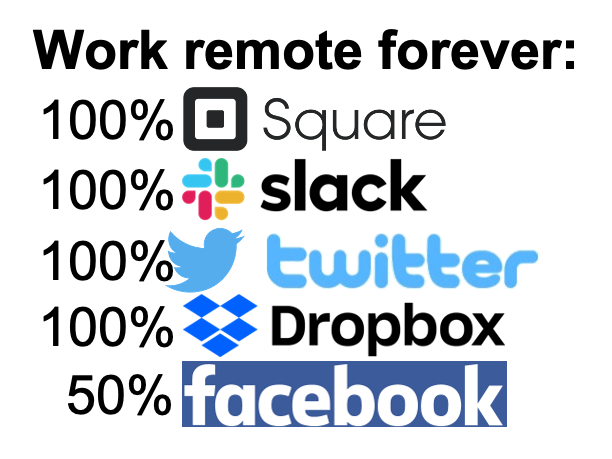
I chose the animated image with Slack and Zoom’s share price at the top of this newsletter to demonstrate the clear winner of COVID: Collaboration!
At first, companies rushed to provide remote collaboration tools to their employees to make them work from home. However, after seven months of this, a different trend is
emerging: Voluntary remote collaboration. And it’s here to stay!
We learned that working from home has personal and business benefits. It’s more efficient for certain workshops. It’s less expensive for some meetings. And the lack of travel time and time spent hunting for empty meeting rooms frees up hours, increases productivity, and improves work-life balance. Already, this new way of working has created new tools. Here’s a selection of useful remote collaboration tools that I came to know during COVID and that I’ll continue to use:
For teamwork:
Miro and Mural digital whiteboards. Easy to set up and very intuitive to use. And they offer the advantage of automatic saving and the possibility to share, forward, print, and more. Good luck with that on a traditional office whiteboard!
In my experience, one significant disadvantage of remote collaboration tools is losing some of the creativity that happens when people physically stand together in a room and collaborate. The serendipity that makes strokes of genius happen is hard to conjure remotely: Online tools cannot fully replace human creativity. Here’s an insightful article from the Miro team about how COVID has influenced their product evolution.
For meetings & events:
Zoom is probably the most publicly known winner in the COVID tech field. It experienced phenomenal growth during COVID, increasing its business customer base fivefold, and aims for 2.4b$ revenue this fiscal year.
But COVID also brought out new players, with either new solutions born out of prolonged working from home, or improving available ones with the learnings from long-term remote working.
Meetings are one such area. In the previous world of in-person meetings, a regular joke I used to hear was how to get the projector to work. Today, it’s how to let someone share their screen contents remotely. Or how to do a quick vote. Or how to allow participants to access files in a remote cloud (a pleonasm or a regular thing in the time of COVID?).
One company that promises to have solved the cumbersome online meeting user interface and assembled the most common functionalities in one easy-to-use tool is Podiobox. And it’s mobile-ready: Just scan the QR code on the screen to join a meeting. Podiobox is enterprise-friendly because it’s fully browser-based, with no downloads needed. And it provides seamless integration with YouTube to show videos smoothly.
COVID has shown us that organizing events is one way to keep employees, customers, or the public engaged, and has inspired (if such a word can be associated with the virus) alternative ways to make money.
Hopin.to promises a superior experience for event planning, advertising, ticket selling, attendee engagement, and post-event data analysis.
Health tracking & tracing:
Another area where COVID lowered barriers to usage is the tracking and tracing of health. Your health now depends on keeping an eye on your own health and the health of those you’ve been around. But even before COVID, Apple said that its smartwatch was a part of their health strategy. And late last year, Google quietly acquired Fitbit, the pioneer of digital health trackers. It’s clear to me that these tech behemoths see business opportunities in our health. With an ever larger portion of the world’s population living longer, digital health is an attractive market and, without any doubt, one of the next big things. COVID may just have kicked that door wide open!
The Swiss university EPFL announced the successful development of a COVID contact tracing app in May 2020.
I see two remarkable facts about this app and its development:
First, it was developed to respect stringent privacy rules, and users aren’t disclosing any personal information.
And second, Apple and Google cooperated in developing this app and similar ones and released APIs in record time. You can read the details here.

Top of the Month
Deepfake Education!
It’s increasingly difficult to tell real from fake in the digital world. Did they really say this? Were they really there? Do they really look like this?
While we should all do the 5-W check on pieces of news before sharing any content, it’s more difficult with images.
Recently, MIT and a consortium, including Adobe, Twitter, and the New York Times, published educational contents to raise awareness of “deepfake” digital works. I find these to be very commendable initiatives – bravo!
Judge for yourself by watching MIT’s deepfake video of President Nixon reading a speech on TV. He never gave this speech. The video is computer generated. The speech was written in the case the Apollo rocket was destroyed, and the astronauts were killed during their final approach to the moon’s surface. Can you tell that Nixon didn’t really say this?
Two other deepfake videos: Russian President Putin and North-Korean dictator Kim Jong-Un, apparently commenting on their efforts to meddle in U.S. elections. It’s shocking how real these videos look. Can you tell they are computer generated?

Flop of the Month
Buick!
It took an extraordinary effort, but Buick actually beat COVID for flop of the month:
A car commercial was shown to me many times during my COVID binge TV watching. A couple is driving their new car to a restaurant. They argue whether the car is a Buick because Buick made it, or if it’s an Alexa because it has Amazon’s digital assistant built into it. I couldn’t believe what I was seeing! A 120-year-old carmaker giving up their brand to a 26-year-old component supplier. Apparently, Buick missed the digital transformation so badly, they don’t even care whether we remember them. How sad – let’s take this as a glimpse of the abyss waiting if you missed the boat to the digital age.

